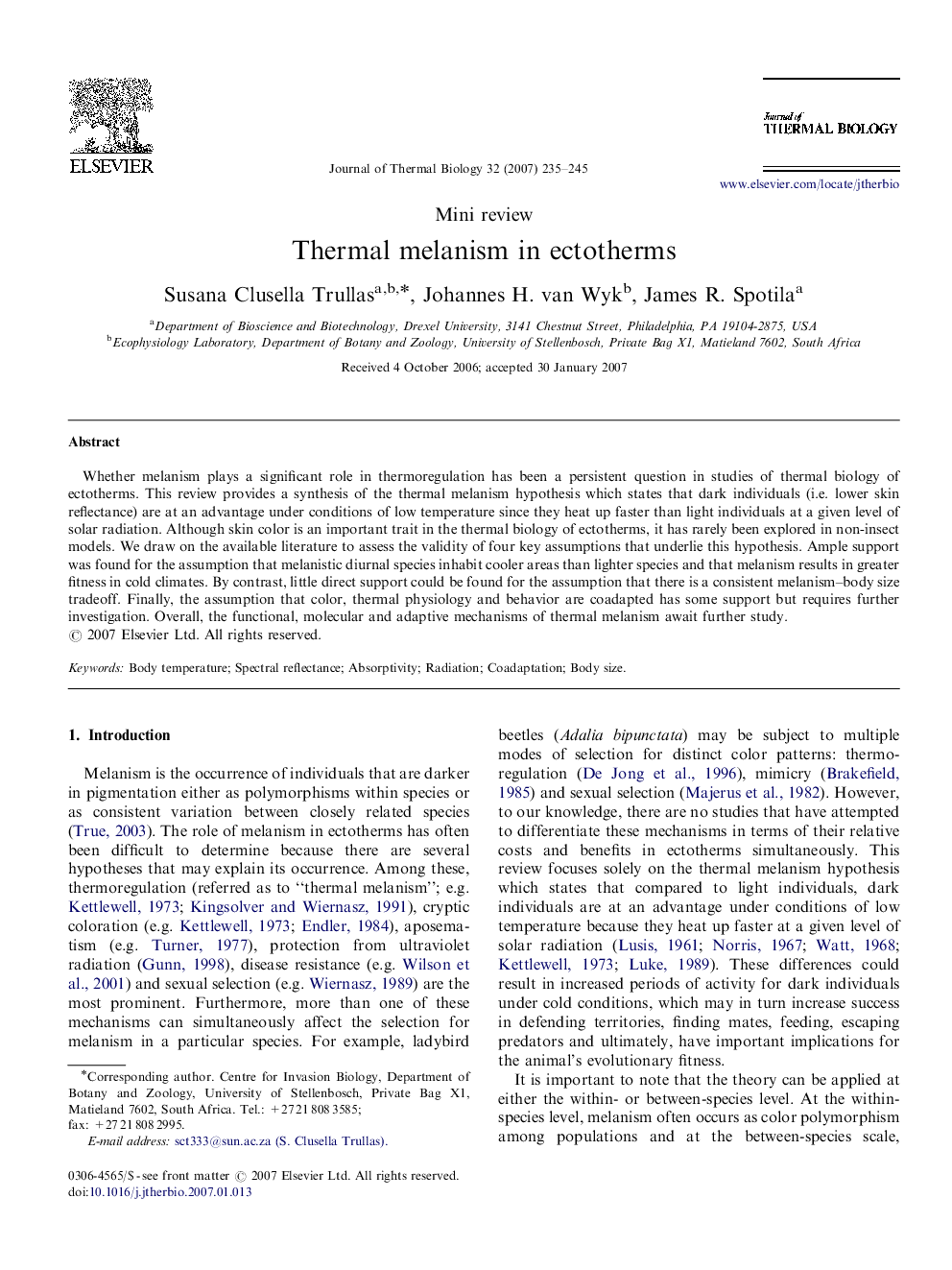| کد مقاله | کد نشریه | سال انتشار | مقاله انگلیسی | نسخه تمام متن |
|---|---|---|---|---|
| 2843787 | 1166136 | 2007 | 11 صفحه PDF | دانلود رایگان |

Whether melanism plays a significant role in thermoregulation has been a persistent question in studies of thermal biology of ectotherms. This review provides a synthesis of the thermal melanism hypothesis which states that dark individuals (i.e. lower skin reflectance) are at an advantage under conditions of low temperature since they heat up faster than light individuals at a given level of solar radiation. Although skin color is an important trait in the thermal biology of ectotherms, it has rarely been explored in non-insect models. We draw on the available literature to assess the validity of four key assumptions that underlie this hypothesis. Ample support was found for the assumption that melanistic diurnal species inhabit cooler areas than lighter species and that melanism results in greater fitness in cold climates. By contrast, little direct support could be found for the assumption that there is a consistent melanism–body size tradeoff. Finally, the assumption that color, thermal physiology and behavior are coadapted has some support but requires further investigation. Overall, the functional, molecular and adaptive mechanisms of thermal melanism await further study.
Journal: Journal of Thermal Biology - Volume 32, Issue 5, July 2007, Pages 235–245